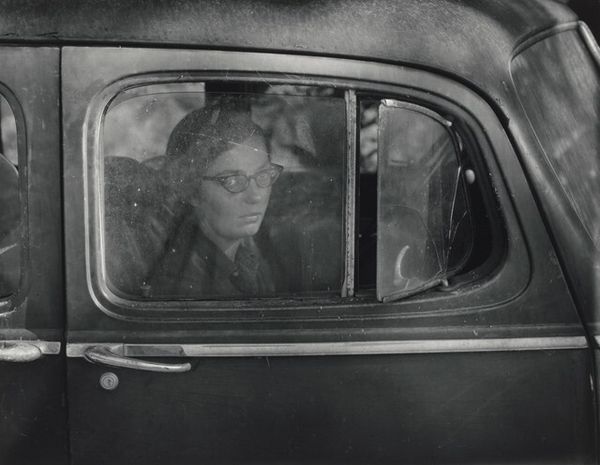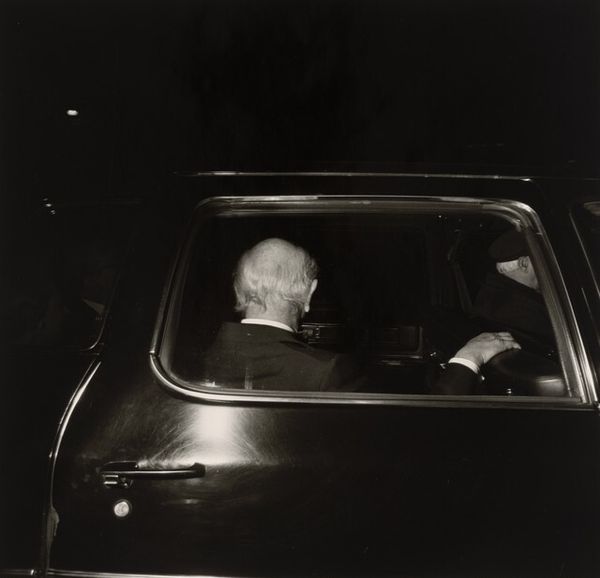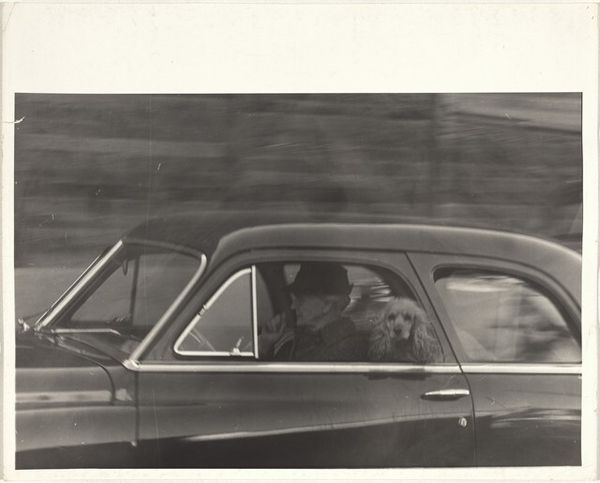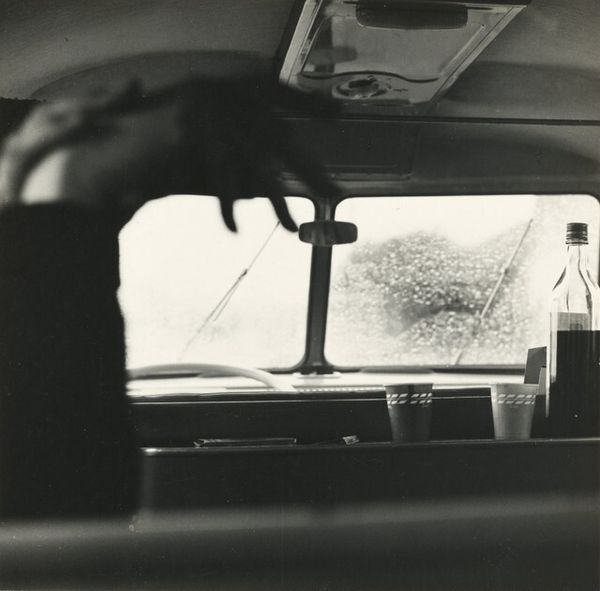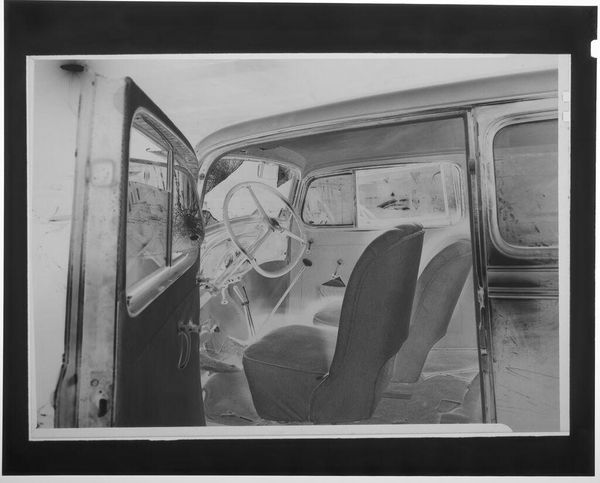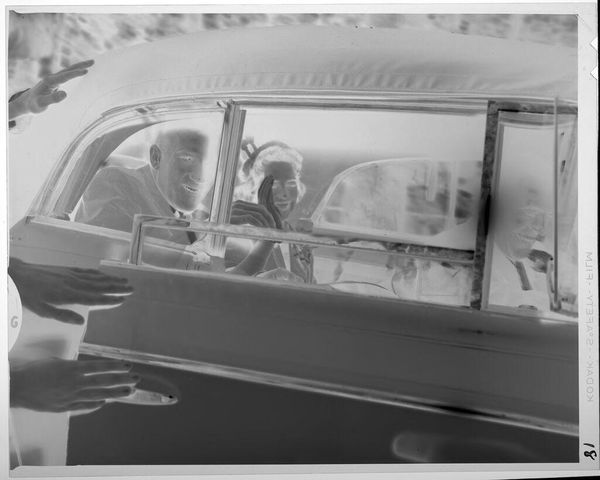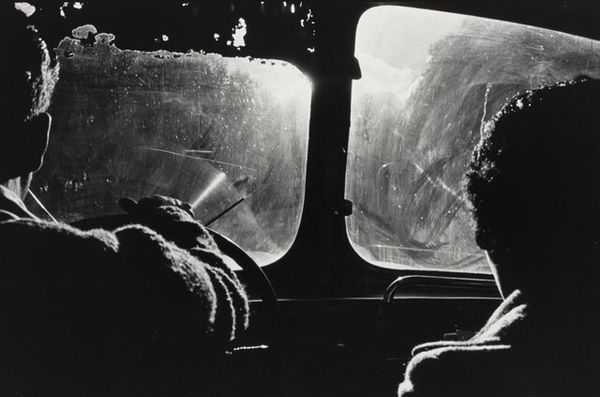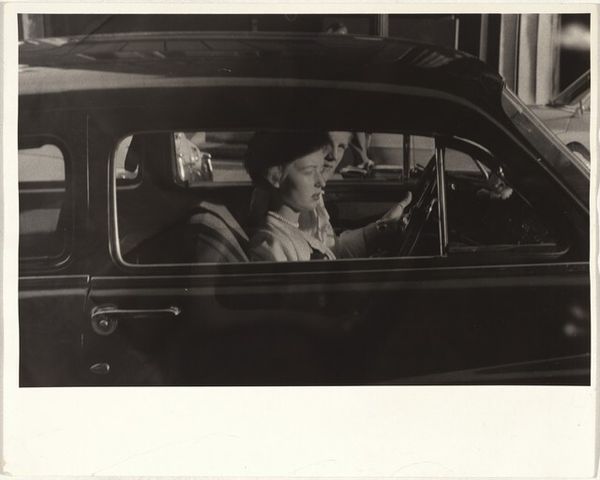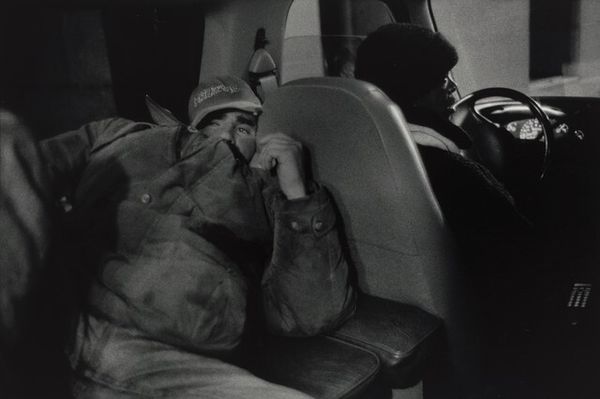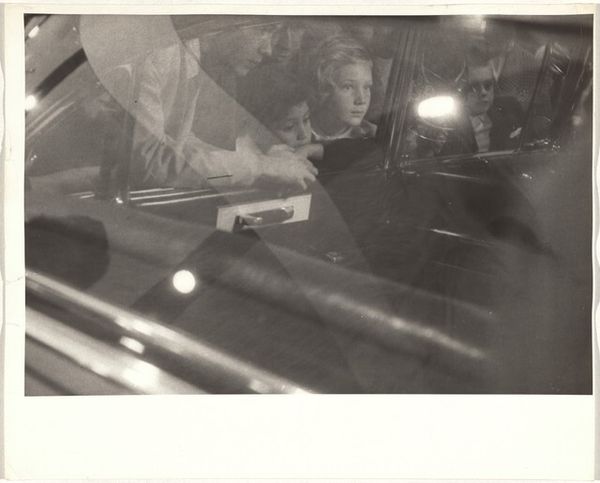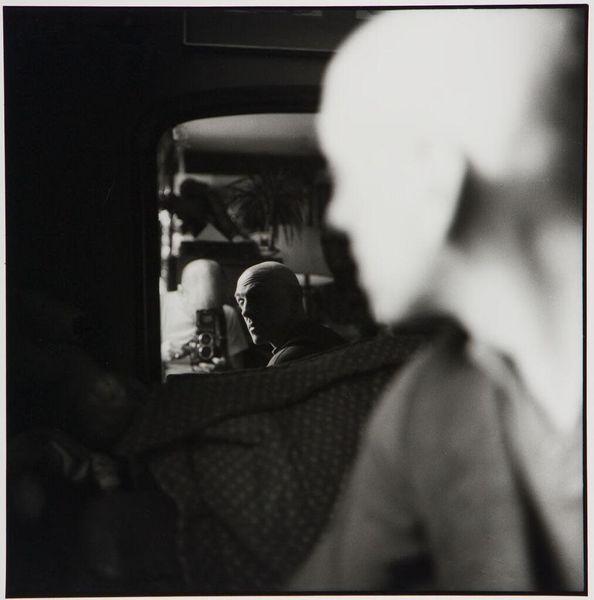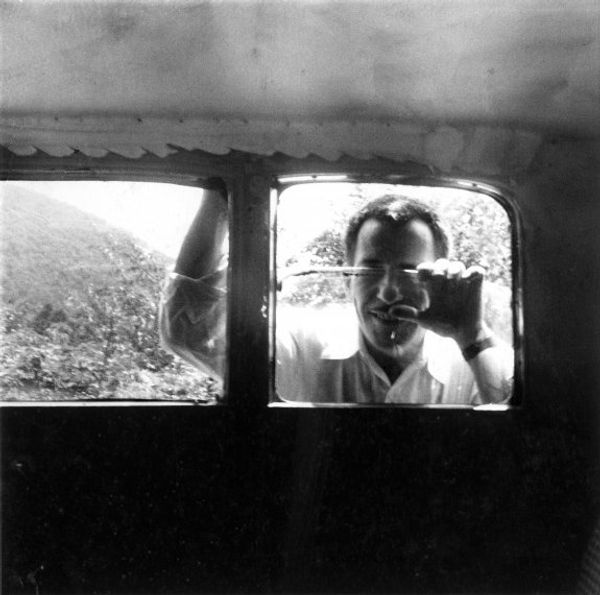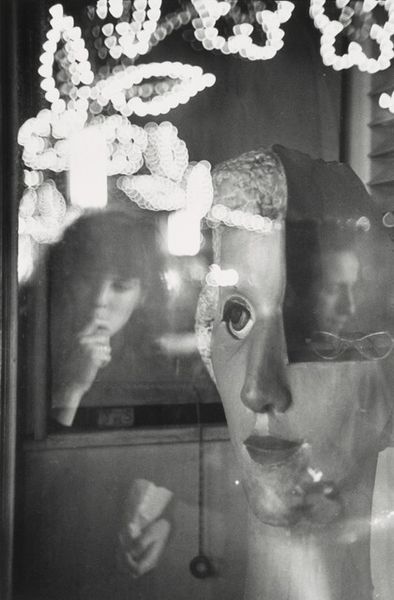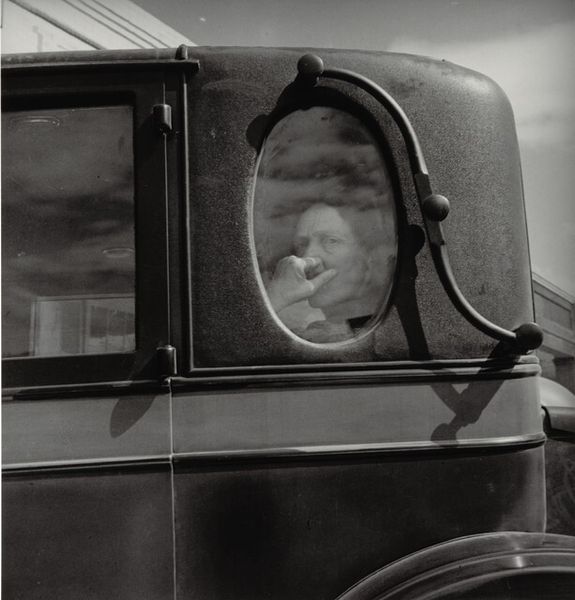
photography, gelatin-silver-print
#
portrait
#
black and white photography
#
black and white format
#
street-photography
#
photography
#
gelatin-silver-print
#
monochrome photography
#
modernism
#
realism
#
monochrome
Copyright: Elliott Erwitt,Fair Use
Editor: Here we have Elliott Erwitt’s “Colorado, USA,” a gelatin silver print from 1955. The boy's face pressed against the broken car window is… well, it's a bit unsettling, isn’t it? What’s your take on this, particularly regarding its historical context? Curator: It's more than just unsettling. Erwitt, often celebrated for his humorous takes on everyday life, presents something quite poignant here. Considering the socio-political climate of 1950s America, marked by Cold War anxieties and emerging social tensions, this broken window becomes a potent symbol. Think of the era’s emphasis on the nuclear family ideal versus the growing undercurrents of discontent. Does that change your view of the boy's gaze? Editor: Definitely. The fracture almost becomes a filter, like he's viewing the world – or being viewed by it – through damage. Were photographs like these, capturing such social anxieties, common during that period, or was Erwitt somewhat unique in his approach? Curator: While many photographers focused on the picturesque aspects of American life, Erwitt, alongside contemporaries like Robert Frank, subtly questioned the dominant narrative. The museum and gallery system were beginning to showcase documentary photography as a means of social commentary, even if subtly done. This image invites us to consider what might have "shattered" this seemingly idyllic scene, what kind of "impact" would have left a lasting impression. Editor: So the image itself becomes a form of quiet protest? A subtle crack in the facade of the American Dream? Curator: Precisely. And its display within a museum solidifies its role as a commentary, pushing us to remember that art doesn’t exist in a vacuum; it’s always shaped by, and shaping, the cultural landscape. What have you learned about viewing art's broader context by examining this piece? Editor: It’s pushed me to see beyond the immediate aesthetic and think critically about the forces that shape both the art and the society it reflects. Thanks for your insightful perspective.
Comments
No comments
Be the first to comment and join the conversation on the ultimate creative platform.
